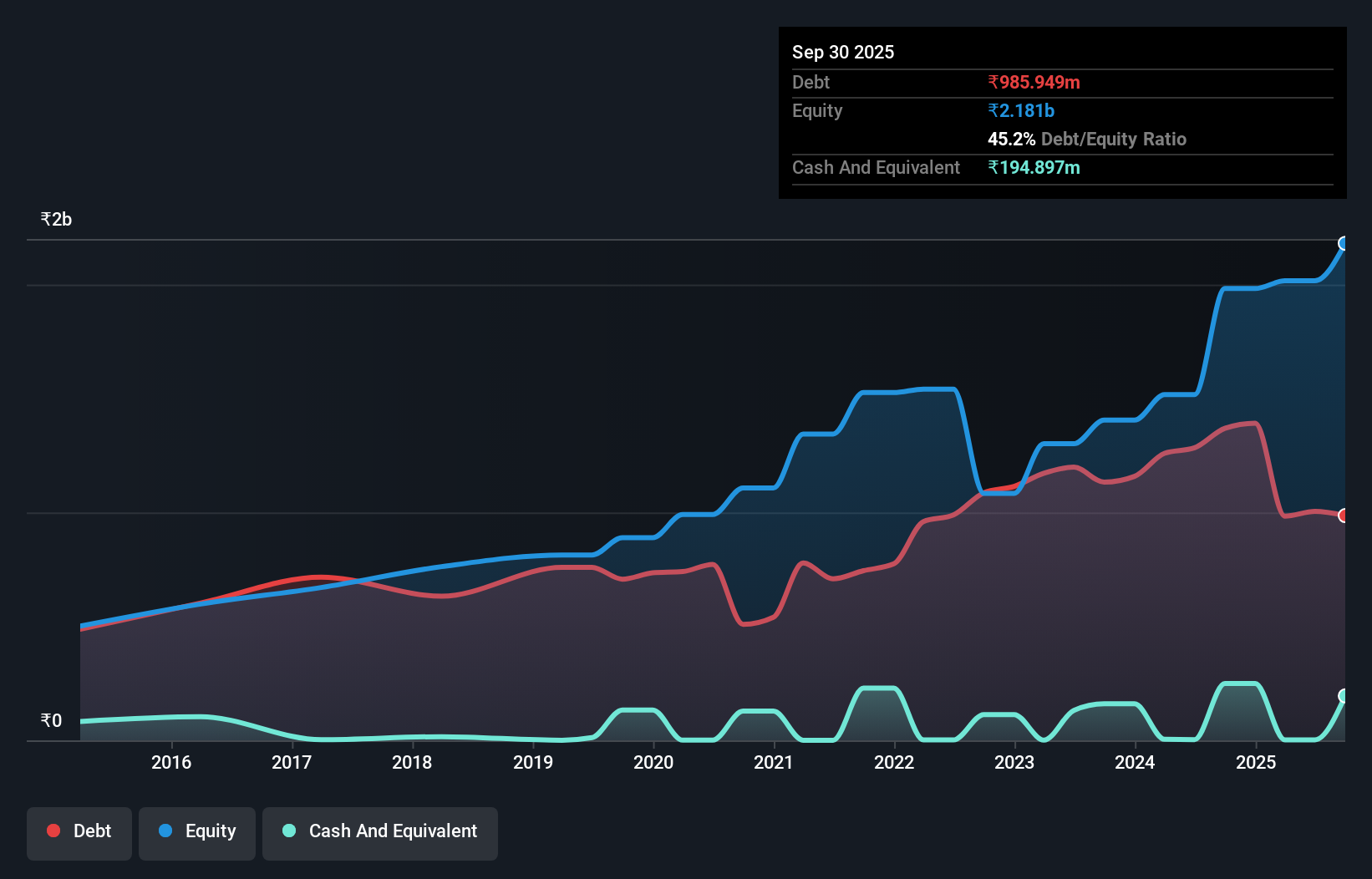Would Kriti Industries (India) (NSE:KRITI) Be Better Off With Less Debt?
The external fund manager backed by Berkshire Hathaway's Charlie Munger, Li Lu, makes no bones about it when he says 'The biggest investment risk is not the volatility of prices, but whether you will suffer a permanent loss of capital.' So it might be obvious that you need to consider debt, when you think about how risky any given stock is, because too much debt can sink a company. We can see that Kriti Industries (India) Limited (NSE:KRITI) does use debt in its business. But is this debt a concern to shareholders?
When Is Debt A Problem?
Debt assists a business until the business has trouble paying it off, either with new capital or with free cash flow. In the worst case scenario, a company can go bankrupt if it cannot pay its creditors. However, a more frequent (but still costly) occurrence is where a company must issue shares at bargain-basement prices, permanently diluting shareholders, just to shore up its balance sheet. Of course, plenty of companies use debt to fund growth, without any negative consequences. The first thing to do when considering how much debt a business uses is to look at its cash and debt together.
How Much Debt Does Kriti Industries (India) Carry?
As you can see below, Kriti Industries (India) had ₹985.9m of debt at September 2025, down from ₹1.37b a year prior. On the flip side, it has ₹194.9m in cash leading to net debt of about ₹791.1m.

How Healthy Is Kriti Industries (India)'s Balance Sheet?
According to the last reported balance sheet, Kriti Industries (India) had liabilities of ₹1.54b due within 12 months, and liabilities of ₹494.5m due beyond 12 months. Offsetting this, it had ₹194.9m in cash and ₹306.3m in receivables that were due within 12 months. So it has liabilities totalling ₹1.53b more than its cash and near-term receivables, combined.
While this might seem like a lot, it is not so bad since Kriti Industries (India) has a market capitalization of ₹5.27b, and so it could probably strengthen its balance sheet by raising capital if it needed to. But it's clear that we should definitely closely examine whether it can manage its debt without dilution. When analysing debt levels, the balance sheet is the obvious place to start. But it is Kriti Industries (India)'s earnings that will influence how the balance sheet holds up in the future. So when considering debt, it's definitely worth looking at the earnings trend. Click here for an interactive snapshot.
View our latest analysis for Kriti Industries (India)
Over 12 months, Kriti Industries (India) made a loss at the EBIT level, and saw its revenue drop to ₹6.6b, which is a fall of 19%. We would much prefer see growth.
Caveat Emptor
While Kriti Industries (India)'s falling revenue is about as heartwarming as a wet blanket, arguably its earnings before interest and tax (EBIT) loss is even less appealing. To be specific the EBIT loss came in at ₹61m. When we look at that and recall the liabilities on its balance sheet, relative to cash, it seems unwise to us for the company to have any debt. Quite frankly we think the balance sheet is far from match-fit, although it could be improved with time. We would feel better if it turned its trailing twelve month loss of ₹170m into a profit. So to be blunt we do think it is risky. There's no doubt that we learn most about debt from the balance sheet. But ultimately, every company can contain risks that exist outside of the balance sheet. We've identified 2 warning signs with Kriti Industries (India) (at least 1 which doesn't sit too well with us) , and understanding them should be part of your investment process.
If you're interested in investing in businesses that can grow profits without the burden of debt, then check out this free list of growing businesses that have net cash on the balance sheet.
Valuation is complex, but we're here to simplify it.
Discover if Kriti Industries (India) might be undervalued or overvalued with our detailed analysis, featuring fair value estimates, potential risks, dividends, insider trades, and its financial condition.
Access Free AnalysisHave feedback on this article? Concerned about the content? Get in touch with us directly. Alternatively, email editorial-team (at) simplywallst.com.
This article by Simply Wall St is general in nature. We provide commentary based on historical data and analyst forecasts only using an unbiased methodology and our articles are not intended to be financial advice. It does not constitute a recommendation to buy or sell any stock, and does not take account of your objectives, or your financial situation. We aim to bring you long-term focused analysis driven by fundamental data. Note that our analysis may not factor in the latest price-sensitive company announcements or qualitative material. Simply Wall St has no position in any stocks mentioned.
About NSEI:KRITI
Kriti Industries (India)
Manufactures and sells piping products and solutions, and accessories in India and internationally.
Excellent balance sheet and slightly overvalued.
Similar Companies
Market Insights
Community Narratives




